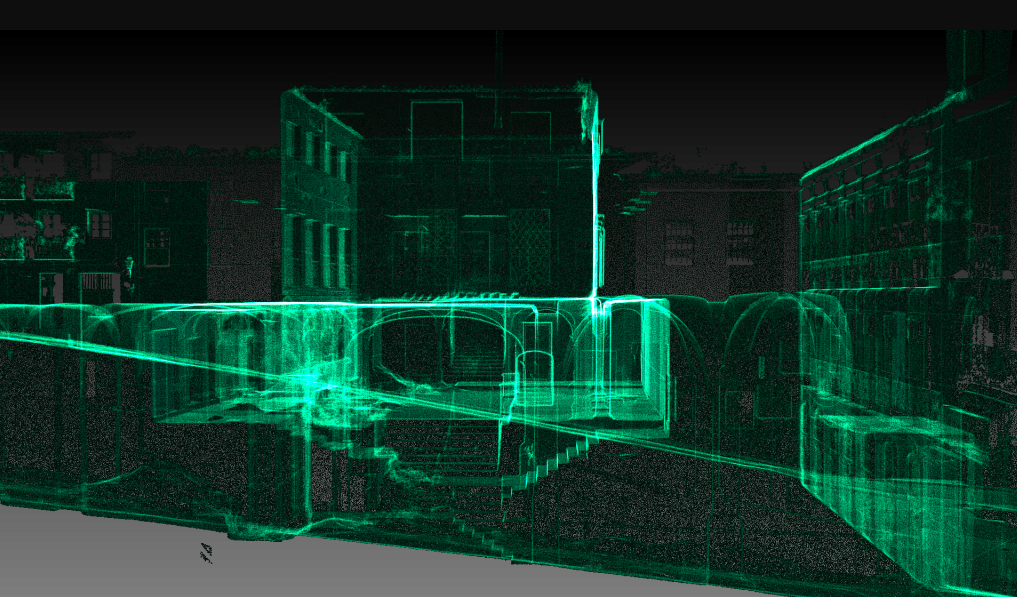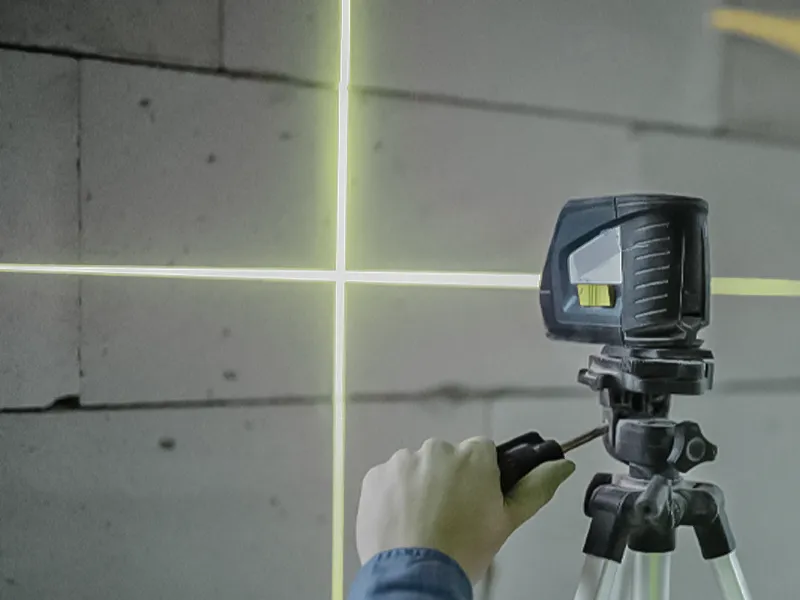Why 3D Scanning Enhances Precision in Construction Projects
Wiki Article
How 3D Laser Scanning Revolutionizes Architectural Layout and Building Projects
3D laser scanning is changing the landscape of architectural design and construction. This technology provides unmatched accuracy in catching existing settings, which assists in far better project preparation and implementation. It lowers mistakes while boosting efficiency in different stages of development. The effects for collaboration among engineers, designers, and other stakeholders are significant. These innovations unlock to new layout possibilities and innovative solutions. What lies in advance for this evolving innovation?The Principles of 3D Laser Scanning Technology
3D laser scanning technology might appear facility, its core principles are transformative and uncomplicated for architectural design. This technology employs laser beams to capture accurate measurements of physical structures, producing a thorough factor cloud that stands for the scanned atmosphere. A laser scanner gives off fast pulses of light, determining the moment it takes for the light to return, which permits the computation of distances with exceptional accuracy.The resulting factor cloud can be transformed right into a 3D design, giving architects with vital aesthetic data. This model allows experts to evaluate and manipulate design elements within their tasks, enabling cutting-edge options and boosted visualization. By employing 3D laser scanning, architects can much better comprehend the status quo of a site, ensuring that brand-new styles integrate with their environments. This combination of innovation right into building design marks a significant improvement, promoting imagination and precision in the area.

Enhancing Accuracy and Efficiency in Architectural Projects
As building jobs progressively demand precision and rate, 3D laser scanning becomes a critical device in boosting both precision and effectiveness. This innovation catches numerous information factors in a short duration, creating precise and detailed 3D models of existing structures. The capability to obtain accurate measurements decreases the danger of errors throughout the design phase, allowing architects to visualize their tasks with unequaled quality.In addition, the quick data collection procedure lessens the time invested on-site, enabling teams to focus on analysis and layout renovations. With real-time information schedule, changes can be made quickly, promoting a more streamlined operations. The combination of 3D laser scanning into architectural practices not just enhances measurement accuracy yet additionally boosts the general project timeline, helping with quicker decision-making. In a sector where accuracy is important, this innovation stands as a transformative force, elevating the criteria of building design and construction jobs.
Enhancing Collaboration Amongst Stakeholders
While traditional architectural processes commonly involve fragmented communication among stakeholders, 3D laser scanning promotes a more natural joint atmosphere. By giving accurate, high-resolution data, this modern technology allows architects, designers, clients, and professionals to run from a unified factor of referral. The thorough visualizations created via laser scanning get rid of ambiguities and misconceptions, making certain that all parties have access to the same details.This openness boosts decision-making and urges timely responses, as stakeholders can easily envision style elements and spatial connections. On top of that, the integration of 3D scanning data right into Structure Details Modeling (BIM) platforms better enhances cooperation, enabling real-time updates and adjustments. Such seamless interaction not just minimizes problems but also accelerates job timelines, as all stakeholders stay aligned throughout the style and construction phases. Inevitably, 3D laser scanning transforms traditional process right into a more efficient and collaborative process, profiting all celebrations involved.
Unlocking Creative Opportunities in Design
By enabling engineers to envision complicated spatial partnerships and intricate information, 3D laser scanning reveals creative opportunities in style. This innovation permits for accurate mapping of existing atmospheres, making it possible for engineers to explore ingenious principles that might have formerly appeared impractical. With highly accurate data, developers can experiment with unique forms and products, pressing the limits of conventional style.The assimilation of 3D laser scanning into the style procedure fosters cooperation among multidisciplinary teams, urging the exchange of concepts and enhancing creative thinking. The in-depth visualizations produced by this innovation not only help in recognizing prospective layout difficulties yet also inspire remedies that might not have been thought about. Because of this, engineers can produce more dynamic and appealing areas that resonate with individuals while fulfilling practical demands. Ultimately, 3D laser scanning transforms the building landscape, equipping designers to realize their visions with unprecedented precision and creativity.
The Future of 3D Laser Scanning in Architecture and Construction
The assimilation of 3D laser scanning right into building layout not only boosts imagination yet likewise establishes the phase for its developing role in the future of architecture and building and construction. As innovation advances, the accuracy and efficiency of laser scanning will continue to enhance, enabling builders and engineers to produce extra complicated styles with accuracy - 3D Scanning. Using this technology in real-time data collection will certainly facilitate far better decision-making, reducing mistakes this link and enhancing operationsFuture applications may consist of increased and online fact assimilations, enabling stakeholders to visualize projects in immersive environments. On top of that, as sustainability becomes a top priority, 3D laser scanning will sustain the development of energy-efficient layouts by supplying thorough understandings right into existing structures. As partnership among numerous self-controls becomes more vital, the capacity to share exact 3D models will promote innovation and boost project end results. Inevitably, 3D laser scanning will certainly redefine requirements in architectural style and construction methods.
Regularly Asked Questions
What Is the Price of Applying 3D Laser Scanning Modern Technology?

Exactly how Lengthy Does a Common 3D Laser Scanning Task Take?
A regular 3D laser scanning job can take anywhere from a couple of hours to several days, depending upon variables such as the job's dimension, intricacy, and the level of information needed for exact data capture.What Kinds Of Projects Benefit A Lot Of From 3D Laser Scanning?
3D laser scanning benefits numerous projects, particularly massive constructions, historical restorations, and complicated improvements. It boosts accuracy in dimensions, decreases mistakes, and gives in-depth data essential for effective preparation and execution in building style and building.
Exist Details Software Program Programs Required for 3D Laser Scans?
Yes, certain software application are important for refining 3D laser scans. 3D Scanning. Popular options include Autodesk Wrap-up, Faro Scene, and Leica Cyclone, each offering unique features tailored for visualizing and evaluating checked information successfully in numerous jobsExactly How Does 3D Laser Scanning Impact Environmental Sustainability in Building?
3D laser scanning enhances ecological sustainability in construction by decreasing material waste, making it possible for specific dimensions, and promoting reliable source usage. This modern technology allows for better planning, reducing the eco-friendly impact of construction projects through improved accuracy and effectiveness.3D laser scanning is changing the landscape of building style and construction. 3D laser scanning technology may seem his comment is here complicated, its core concepts are transformative and straightforward for architectural style. By making it possible for designers to visualize complicated elaborate information and spatial relationships, 3D laser scanning discloses creative possibilities in style. The combination of 3D laser scanning into the style process fosters collaboration among multidisciplinary teams, motivating the exchange of ideas and boosting creative thinking. The integration of 3D laser scanning right into building style not only improves creative thinking but additionally sets the phase for its why not find out more advancing function in the future of style and construction.
Report this wiki page